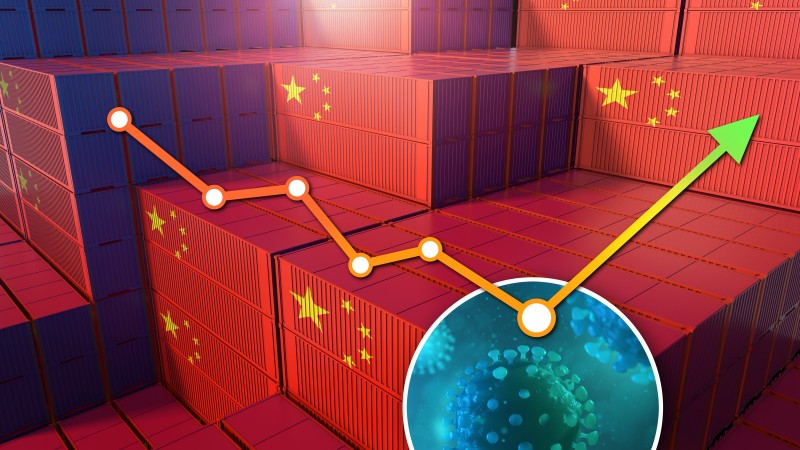
China was the first epicenter of the COVID-19 virus outbreak and subsequently, its economy was hit severely by the pandemic. Notwithstanding, all the economic forecasts for China now point to positive growth for 2020, with the strong recovery momentum continuing into 2021. The ASEAN+3 Macroeconomic Research Office (AMRO) projects the economy to grow by 2.0 percent this year and 8.7 percent in 2021. So what are the factors behind this remarkable development and positive outlook?
Effective containment and astute policy design
To begin, the swift and effective containment of the pandemic was key. It allowed the authorities to reopen the domestic economy progressively from March 2020 onwards. Production resumed quite quickly once the lockdown was eased in the second quarter. Exports started to surge as Chinese manufacturers, especially those in the global supply chains, were able to operate again. This phenomenon is in stark contrast with many economies, where production continues to stall and exports continue to stutter.
Complementing the country’s strict containment measures, policy design and sequencing have been deliberate and effective. Economic policy measures at the beginning of the outbreak were responsive and significant. Thereafter, policy measures became more sizable and targeted, helping to shore up growth and employment.
As China’s economy revived, and with firms and households receiving timely support, restored confidence added another boost to its recovery. A large domestic demand base buttressed China’s growth recovery and sustained job creation despite a challenging external environment amid recurring pandemic waves.
On the fiscal front, initial measures focused on providing urgent support to save lives, bring the pandemic under control, and deliver relief to the vulnerable groups. Then tax and fee cuts were enacted, particularly for micro and small enterprises (MSEs). From April 2020, fiscal support increased in size, taking the forms of comprehensive tax and fee cuts, infrastructure spending, and further support for the MSEs and vulnerable groups. In particular, reducing the social security contribution by firms significantly helped to reduce costs and keep the workers employed.
A large number of local economies at the county and township levels were hit-hard by the pandemic and encountered a sharp drop in local government revenue. The central government came to their support via fiscal transfers amounting to RMB2 trillion (or more than USD305 billion). From AMRO’s recent virtual visits to Hubei and Yunnan, we found that the strengthened transfer scheme was essential in helping the local governments maintain their operations and provided timely support for the vulnerable groups.
Crucially, monetary policy measures have helped ensure sufficient liquidity in the financial system. A set of measures was deployed to ensure that banks had enough liquidity to provide supportive financing to the real economy. These included required reserve ratio cuts and larger relending facilities. As MSEs lagged behind in the recovery, monetary policy measures became more targeted. Many forms of support for MSEs, such as that provided through the relending program, are innovative and effective, helping to cushion job losses.
At the same time, financial policies, centered around the deferment of loan repayments, have enabled banks to continue providing supportive financing. Lower interest rates on loans for businesses and sectors that are adversely impacted helped to reduce burdens on borrowers.
Lessons from the Global Financial Crisis
It is noteworthy that the designs of policy measures in China have factored in experiences and lessons from previous financial crises.
In particular, the stimulus package during the Global Financial Crisis (GFC) in 2009 was much larger in size and delivered stronger counter-cyclical support to the economy. However, the heavy reliance of the package on infrastructure investment and state-owned enterprise spending led to overcapacity in heavy industries, a sharp rise in corporate and local government debt, and a rapid increase in shadow banking loans.
The whole policy package this time around is more measured than that during the GFC. Our estimate of the fiscal package, at around 5 percent of GDP, is also smaller than those in many other countries. This means there is still policy space for future needs.
Challenges moving forward
Notwithstanding the strong growth momentum, the recovery of consumption, manufacturing investment, and MSEs in the services sector are still lagging behind. Non-performing loans are expected to rise, especially for small banks whose main customers are hard-hit MSEs. A number of these banks will need to raise more capital notwithstanding the challenging conditions for doing so.
Looking ahead, Chinese policymakers should continue to focus on ensuring that the recovery broadens further, and continue to provide support for weaker enterprises and vulnerable groups. The phasing-out of policy support in due course needs to cautiously take into account both domestic and external conditions and remaining uncertainties.
All crises differ, but every crisis and its policy approach will provide useful lessons for designing better policy responses down the road. One important takeaway this time is that further strengthening mechanisms to support vulnerable businesses and workers and improving social safety nets should be a top policy priority moving forward. China’s policymakers recognize this and are now more ready for future challenges.
